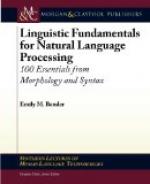“Indeed trade cannot be carried on to any advantage, with the Negroes, Tartars, Americans, and East-Indians, but through the medium of red cloths. The testimonies of travellers are unanimous respecting the preference universally given to this color. I have indicated the universality of this taste, merely to demonstrate the falsehood of the philosophic axiom, that tastes are arbitrary, or that there are in Nature no laws for beauty, and that our tastes are the effects of prejudice. The direct contrary of this is the truth; prejudice corrupts our natural tastes, otherwise the same over the whole earth.
“With red Nature heightens the brilliant parts of the most beautiful flowers. She has given a complete clothing of it to the rose, the queen of the garden: and bestowed this tint on the blood, the principle of life in animals: she invests most of the feathered race, in India, with a plumage of this color, especially in the season of love; and there are few birds without some shades, at least, of this rich hue. Some preserve entirely the gray or brown ground of their plumage, but glazed over with red, as if they had been rolled in carmine; others are besprinkled with red, as if you had blown a scarlet powder over them.
“The red (or rayed) color, in the midst of the five primordial colors, is the harmonic expression of them by way of excellence; and the result of the union of two contraries, light and darkness. There are, besides, agreeable tints, compounded of the oppositions of extremes. For example, of the second and fourth color, that is, of yellow and blue, is formed green, which constitutes a very beautiful harmony, and ought, perhaps, to possess the second rank in beauty, among colors, as it possesses the second in their generation. Nay, green appears to many, if not the most beautiful tint, at least the most lovely, because it is less dazzling than red, and more congenial to the eye.”
Many words come under the example previously given to illustrate the secondary character of adjectives, which should be carefully noticed by the learner, to distinguish whether they define or describe things, or are added to increase the distinction made by the adjectives themselves, for both defining and describing adjectives admit of this addition; as, old English coin, New England rebelion; a mounted whip, and a gold mounted sword—not a gold sword; a very fine Latin scholar.
Secondary adjectives, also, admit of comparison in various ways; as, dearly beloved, a more beloved, the best beloved, the very best beloved brother.




